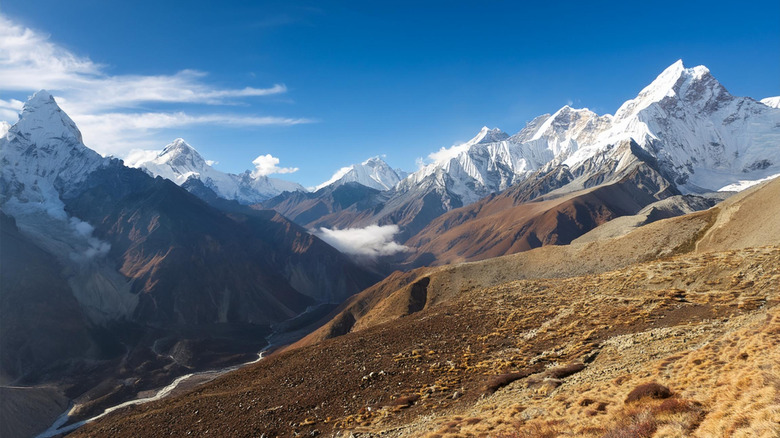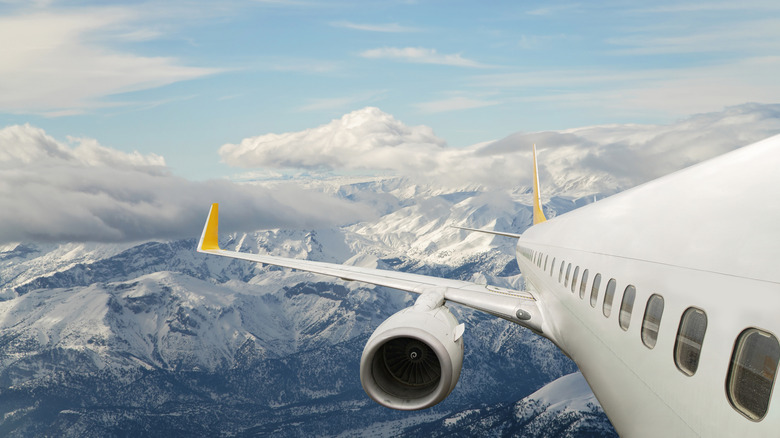The Unsettling Reason Commercial Planes Typically Avoid Flying Over The Himalayas
The Himalayas is the tallest mountain range in the world and a must-visit destination for avid hikers. But it is also so treacherous that planes rarely dare to fly over them. These not-so-gentle mountains sit on the Tibetan Plateau and span about 965,000 square miles, stretching across Pakistan, India, Nepal, Tibet, Bhutan, and Bangladesh. The famous Mount Everest is part of this mountain range, and it is the tallest mountain in the world, reaching 29,035 feet in height. While the Himalayas is not a designated no-fly zone, the towering nature of these mountains is the exact reason why pilots generally avoid flying over them, preferring safer routes instead.
The normal cruising altitude for a plane is between 30,000 and 42,000 feet. In the case of an emergency landing, pilots will need to bring the plane to a low altitude fast. In a decompression event, pilots may need to fly as low as 8,000 feet. With the addition of the rougher than normal turbulence prevalent in the Tibetan Plateau and the lack of flat terrains, this is extremely dangerous and difficult to do with giant mountains looming below.
Flying over the Himalayas is not banned, but highly discouraged
The looming height and the potential of an emergency landing are not the only reasons pilots steer clear of flying over "the roof of the world." The freezing temperatures are also a risk, because they can freeze jet fuel, causing a plane to crash. In addition, the region where the Himalayas are located are not politically sound. Planes avoid the area due to ongoing military operations from the Indian Air Force and the People's Liberation Army Air Force. The Chinese government also restricts commercial aircraft access over Tibet. Additionally, due to harsh conditions, very few people live in the Himalayas. This means there are limited navigation radar services available, which makes communicating with the ground in an emergency very tricky.
While flying over the Himalayas is not common, it is also not impossible. There are a number of Chinese airlines that frequently fly over the region, as well as domestic flights in Nepal and routes from Kathmandu to Xian, Lhasa, or Chengdu. But if you're flying to the region from anywhere else, chances are you won't be able to see the Himalayas out your plane window.

